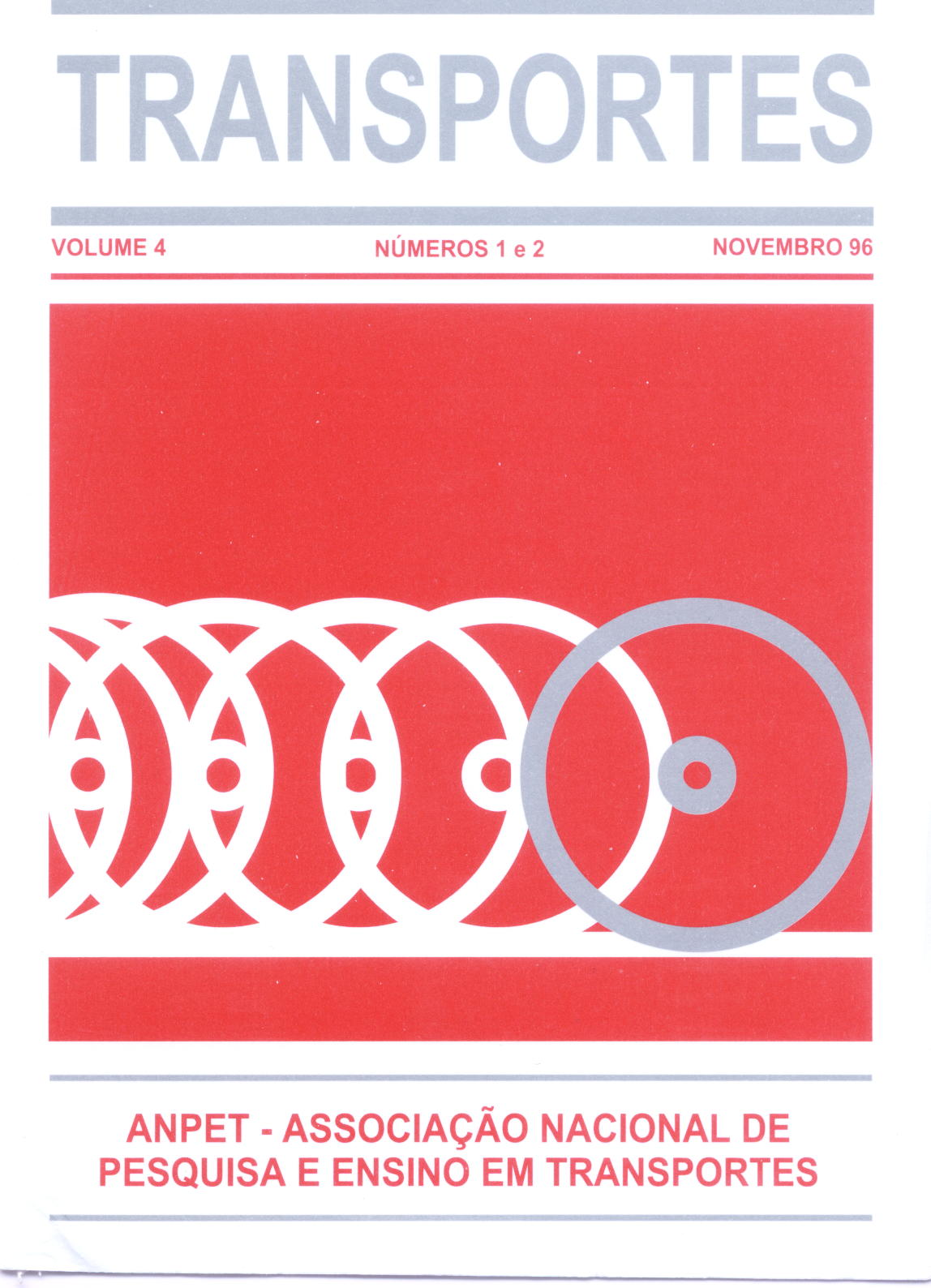PRIORIDADES PARA ÔNIBUS NOS PLANOS DE SINCRONISMO: O CASO DO RIO DE JANEIRO
DOI:
https://doi.org/10.14295/transportes.v4i1.293Abstract
O objetivo deste artigo e descrever os resultados alcançados na implantação dos planos semafóricos calculados pelo programa TRANSYT, sugeridos pelo manual do programa, quando prioridades para os ônibus nas vias principais do Rio de Janeiro são consideradas nos cálculos. Os critérios e facilidades apresentados no programa para estas prioridades tiveram como base o comportamento do trafego na Inglaterra e Escócia, onde o programa foi desenvolvido e modelado. São realizadas comparações entre a composição típica do trafego na Inglaterra e no Brasil, realizadas analises das experiências de priorizar ônibus (ou outro tipo veículo) em outras situações e países. E feita uma analise dos resultados obtidos na implantação de planos de sincronismo com prioridades para ônibus, conforme recomendado pelo manual do TRANSYT, através da comparação de várias situações relativas às simulações dos padrões e modelos de trafego, bem como tipos de planos de sincronismo simulados. Finalmente são apresentadas as soluções temporárias encontradas para o uso dos pianos de sincronismo e a indicação da necessidade de estudos específicos para a solução definitiva do problema.
ABSTRACT
This paper describes the results achieved when signal timing plans calculated by the TRANSYT program with bus priority are used with the values suggested by the program manual. The field trial was in the city of Rio de Janeiro. The criteria and facilities presented by the program manual for that kind of priority were based on the behavior of the traffic in the UK where the program was developed and modeled. There are comparisons between the traffic composition in the UK and 13razil, analysis of the previous experiences in bus (or other kind of vehicles) priorities, in other type of traffic situation and countries. There is an analysis of the results achieved when the signal timing plans calculated as the manual of TRANSYT suggests are implemented in the Rio de Janeiro city centre. This is made by comparisons between several scenarios regarding different patterns of traffic and traffic signal plans. Finally, it is presented temporary solutions to be used in the calculation of signal timing plans and the need for research required for more permanent achievements.
Downloads
Downloads
Published
How to Cite
Issue
Section
License
Authors who submit papers for publication by TRANSPORTES agree to the following terms:
- The authors retain the copyright and grant Transportes the right of first publication of the manuscript, without any financial charge, and waive any other remuneration for its publication by ANPET.
- Upon publication by Transportes, the manuscript is automatically licensed under the Creative Commons License CC BY 4.0 license. This license permits the work to be shared with proper attribution to the authors and its original publication in this journal, and to be adapted for non-commercial purposes, provided appropriate credit is given and any derivative works are distributed under the same terms.
- Authors are authorized to enter into additional separate contracts for the non-exclusive distribution of the version of the manuscript published in this journal (e.g., publishing in an institutional repository or as a book chapter), with recognition of the initial publication in this journal, provided that such a contract does not imply an endorsement of the content of the manuscript or the new medium by ANPET.
- Authors are permitted and encouraged to publish and distribute their work online (e.g., in institutional repositories or on their personal websites) after the editorial process is complete. As Transportes provides open access to all published issues, authors are encouraged to use links to the DOI of their article in these cases.
- Authors guarantee that they have obtained the necessary authorization from their employers for the transfer of rights under this agreement, if these employers hold any copyright over the manuscript. Additionally, authors assume all responsibility for any copyright infringements by these employers, releasing ANPET and Transportes from any responsibility in this regard.
- Authors assume full responsibility for the content of the manuscript, including the necessary and appropriate authorizations for the disclosure of collected data and obtained results, releasing ANPET and Transportes from any responsibility in this regard.









